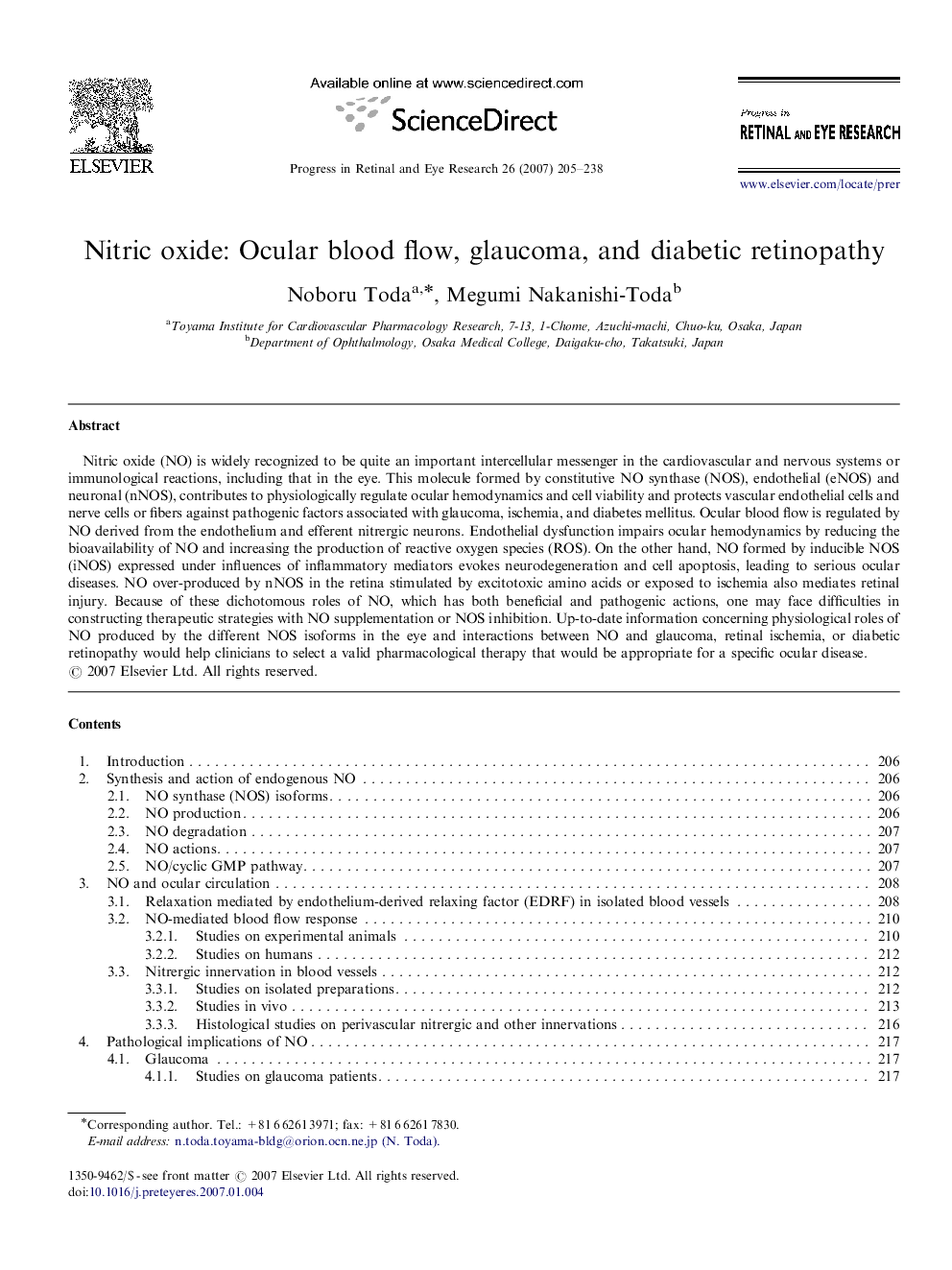| Article ID | Journal | Published Year | Pages | File Type |
|---|---|---|---|---|
| 4032136 | Progress in Retinal and Eye Research | 2007 | 34 Pages |
Nitric oxide (NO) is widely recognized to be quite an important intercellular messenger in the cardiovascular and nervous systems or immunological reactions, including that in the eye. This molecule formed by constitutive NO synthase (NOS), endothelial (eNOS) and neuronal (nNOS), contributes to physiologically regulate ocular hemodynamics and cell viability and protects vascular endothelial cells and nerve cells or fibers against pathogenic factors associated with glaucoma, ischemia, and diabetes mellitus. Ocular blood flow is regulated by NO derived from the endothelium and efferent nitrergic neurons. Endothelial dysfunction impairs ocular hemodynamics by reducing the bioavailability of NO and increasing the production of reactive oxygen species (ROS). On the other hand, NO formed by inducible NOS (iNOS) expressed under influences of inflammatory mediators evokes neurodegeneration and cell apoptosis, leading to serious ocular diseases. NO over-produced by nNOS in the retina stimulated by excitotoxic amino acids or exposed to ischemia also mediates retinal injury. Because of these dichotomous roles of NO, which has both beneficial and pathogenic actions, one may face difficulties in constructing therapeutic strategies with NO supplementation or NOS inhibition. Up-to-date information concerning physiological roles of NO produced by the different NOS isoforms in the eye and interactions between NO and glaucoma, retinal ischemia, or diabetic retinopathy would help clinicians to select a valid pharmacological therapy that would be appropriate for a specific ocular disease.
